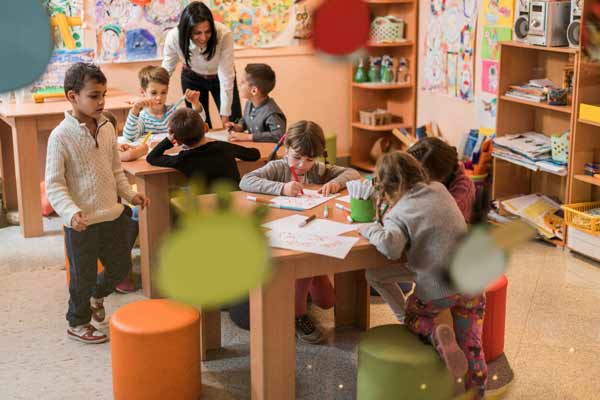When a child is having a hard time reading, it’s frustrating for many people, not just the child. No teacher wants to see their student, nor a parent their child, struggling with something that’s such an integral part of the learning process. To make matters worse, many school districts now have set reading standards that students are expected to reach. This puts added pressure on teachers and is bad news for kids who have reading difficulties, as they may have to repeat a grade if they aren’t able to meet the standards.

In many cases, children who have a hard time reading have vision-related learning problems that have gone undiagnosed. Why does this happen to so many children, and what can be done to help them? Wendy Rosen, a former classroom teacher, educational consultant and author of the book, “The Hidden Link Between Vision and Learning: Why Millions of Learning-Disabled Children are Misdiagnosed,” uses her experience to explain why so many children wrestle with vision-based learning problems. In this post, we’ll share a few of her words.
Understanding the World Through a Child’s Eyes
“We often don’t understand how the world looks to a child. We can hear when a child has a speech problem, we can pick up on a child that may have an auditory problem, but a child with a vision problem, we don’t really know what’s going on, because we are not seeing the world through their eyes.
“Something that few teachers, child study team personnel and school administrators are aware of is that a vision-related learning problem can actually be at the core of a learning disability. When a child is struggling with Convergence Insufficiency, for example, it’s very hard to maintain your focus, and when there’s a reason for that, they will instinctively try to relieve the stress that they’re under. And how do they do that? They will simply look away from their work, because they need a break. So they’ll look out the window, or they’ll look across the classroom.
“And of course these aren’t behaviors a teacher likes to see because it looks like a child is goofing off or like they’re off task or they’re just not getting their work done, when really the child is just trying to cope. The child that asks to leave the room often for water breaks or bathroom breaks or to go to the nurse, or the child who distracts themselves or is very wiggly in their seat or causes distractions, it’s because in some cases these kids have this going on and nobody knows it. And they’re just trying to cope.”
The Importance of Interdisciplinary Dialogue
“It’s very important to have a dialogue, an interdisciplinary dialogue so that we make sure everyone is educated in a way that is accurate.”
“Doctors need to be equipped with this knowledge so, for example, when a parent comes in and says – they’re having their well-check and they ask how they’re doing in school, and the parent says, ‘Well, you know, my child is struggling, and they have this, this and this going on,’ and right away, sometimes a doctor might think, ‘Well, you know what, we should consider that this might be ADHD, because it’s very common. There are many overlapping symptoms between, for example, ADHD and a vision-related learning problem, and unless you know that, unless you know that 15 of the 18 symptoms of ADHD are also present with the vision problem, and that 13 of the 17 symptoms of dyslexia are also present with the vision problem, we can see how easy it is to misdiagnose a child. So having this knowledge could potentially impact the entire course of a child’s life.”
Vision & Eyesight
“It’s very important to understand the difference between vision and eyesight. Very often, when we talk about vision, we are thinking of some 20/20 reading. And that 20/20 reading is only a very small percentage of a person’s visual story. It’s basically how well a person can see at a distance of 20 feet, and there’s so much more to vision than that. With normal binocular vision, our eyes come together, focus on one place and send one image to the brain. When the eyes are not able to do that, when they’re not able to coordinate and team, they’re actually looking at two different places and sending two images to the brain.”
Make an Appointment With Vision Specialists of Michigan
The specialists at Vision Specialists of Michigan have the knowledge and experience to diagnose and treat the visual misalignments that cause vision problems such as Binocular Vision Dysfunction, Convergence Insufficiency, shadowed or double vision and other binocular vision issues. If your student has a visual problem that’s affecting their learning, our innovative aligning micro-prism lenses can help eliminate these problems and their accompanying symptoms. To find out more about our treatment methods, give us a call today at (248) 258-9000.






